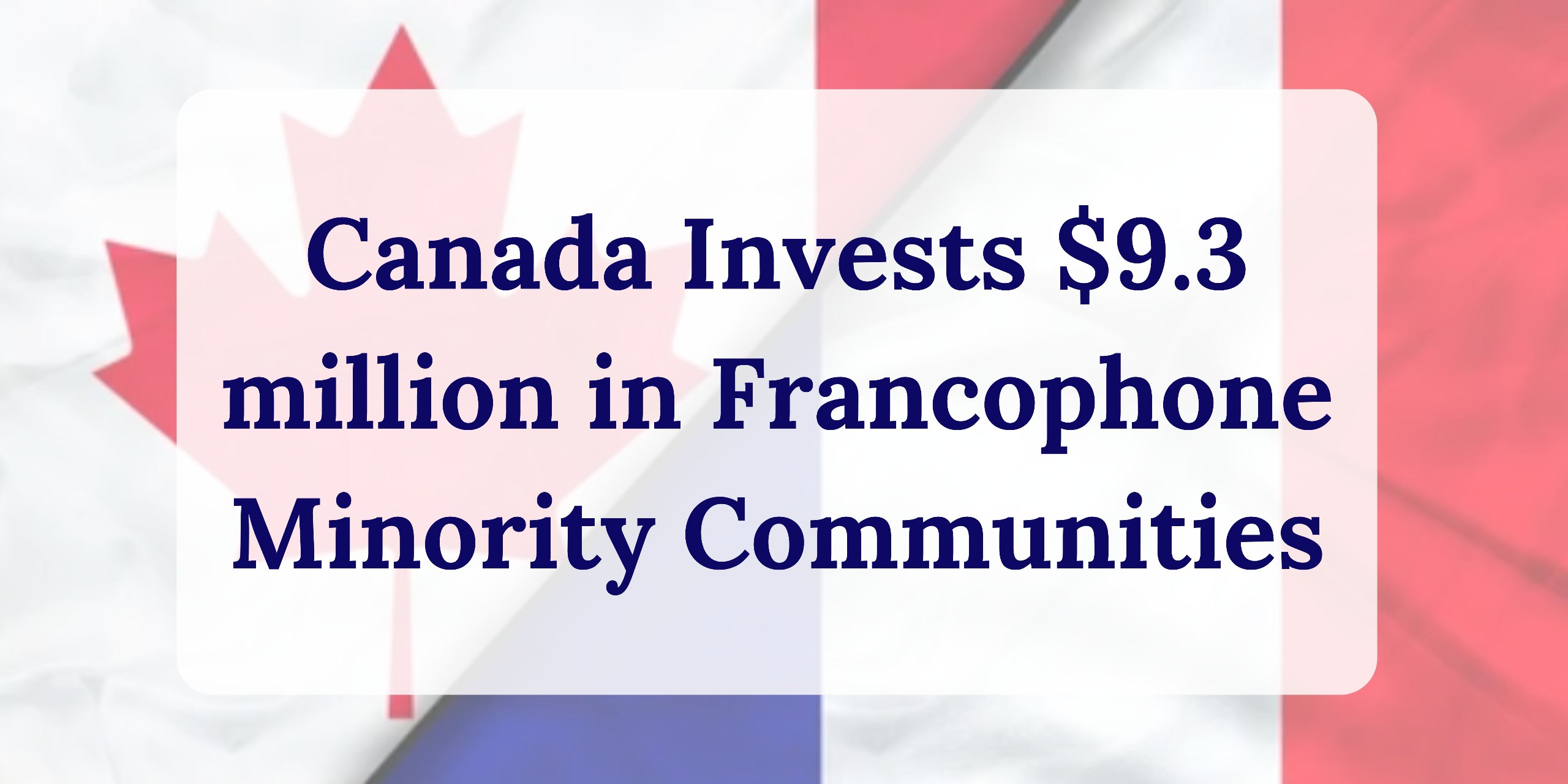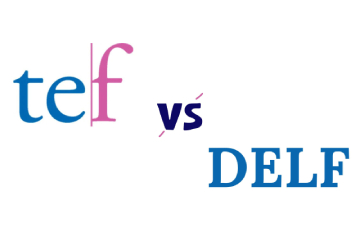
French is one of the most popular languages in the world, spoken by over 300 million people. According to the Foreign Service Institute (FSI), it takes approximately 600–750 hours for a native English speaker to reach professional proficiency in French. However, with the right techniques and strategies, you can significantly speed up your learning process. Here are some effective “cheat codes” to help you learn French quickly and efficiently.
Mastering the fundamentals is key to learning French more effectively. If you’re looking to build a strong foundation, we recommend checking out our French Basic Grammar guide and Basic French Vocabulary guide. These resources will help you understand essential grammar rules and expand your vocabulary.
1. Fundamentals of French
French Vowel Sounds
French has oral vowels (normal vowels) and nasal vowels (where air passes through the nose).
Oral Vowels
French vowels are pronounced more clearly and distinctly than in English. Here’s a basic guide:
| Letter(s) | Example Word | Pronunciation Tip |
|---|---|---|
| a | chat (cat) | Like “ah” in “father” |
| e (open) | mer (sea) | Like “eh” in “bet” |
| e (closed) | été (summer) | Like “ay” in “say” |
| i | ici (here) | Like “ee” in “see” |
| o (open) | porte (door) | Like “aw” in “law” |
| o (closed) | eau (water) | Like “o” in “go” |
| u | lune (moon) | Say “ee” but round your lips |
| y | style (style) | Same as i, like “ee” |
Key tip: The letter u is tricky. To pronounce it, say “ee” as in “see” but round your lips.
Nasal Vowels
Nasal vowels occur when a vowel is followed by n or m but is not pronounced as a full “n” or “m” sound.
| Letter(s) | Example Word | Pronunciation Tip |
|---|---|---|
| an / en | blanc (white) | Like “ahng” (but softer) |
| in / ain | vin (wine) | Like “ang” in “sang” |
| on | nom (name) | Like “own” with a nasal tone |
| un | un (one) | Like “uhng” (with rounded lips) |
Key tip: Unlike English, nasal vowels should not have a hard “n” or “m” at the end—just let the sound flow through your nose.
Common Consonant Patterns
Silent Letters
Many French consonants are silent at the end of words unless followed by a vowel.
| Letter | Example | Pronunciation Rule |
|---|---|---|
| -s | paris (Paris) | Silent unless linking |
| -t | chat (cat) | Silent |
| -d | grand (big) | Silent |
| -p | loup (wolf) | Silent |
| -x | choux (cabbages) | Silent |
Key tip: In phrases like vous avez (you have), the s in vous links with the a in avez to create a “z” sound: /vu zave/. This is called liaison.
Hard and Soft Consonants
| Letter(s) | Example | Pronunciation |
|---|---|---|
| c before e, i, y | cinq (five) | Soft “s” sound |
| c before a, o, u | car (because) | Hard “k” sound |
| g before e, i, y | gentil (nice) | Soft “zh” (like in “measure”) |
| g before a, o, u | gâteau (cake) | Hard “g” (like in “go”) |
Special Consonant Sounds
| Pattern | Example | Pronunciation |
|---|---|---|
| ch | chat (cat) | “sh” as in “she” |
| gn | montagne (mountain) | Like “ny” in “canyon” |
| ll | fille (girl) | Like “y” in “yes” |
| qu | quatre (four) | Like “k” (not “kw”) |
Basic Sentence Structure
Simple Sentences
A simple French sentence follows this order: Subject + Verb + Object
Je mange une pomme. I eat an apple (Subject: Je → Verb: mange → Object: une pomme)
Elle aime le café. She likes coffee. (Subject: Elle → Verb: aime → Object: le café)
Nous regardons un film. We watch a movie. (Subject: Nous → Verb: regardons → Object: un film)
Key Tip: French verbs must agree with the subject in person and number. (Je mange vs. Nous mangeons).
Forming Questions
There are three main ways to ask questions in French:
• Using Intonation (Informal)
Raise your voice at the end of a statement.
Tu aimes le chocolat ? (You like chocolate?)
• Using “Est-ce que” (Neutral)
Add “Est-ce que” before the statement.
Est-ce que tu aimes le chocolat ? (Do you like chocolate?)
• Inversion (Formal & Written)
Swap the subject and verb, adding a hyphen.
Aimes-tu le chocolat ? (Do you like chocolate?)
Negative Sentences
To make a sentence negative, wrap the verb in ne … pas.
Je ne mange pas de viande. I don’t eat meat. (Ne + Verb + Pas)
Elle n’aime pas le café. She doesn’t like coffee. (Ne + Aime + Pas)
Key Tip: If the verb starts with a vowel, ne becomes n’ (Je n’aime pas).
Adjective Placement
In French, most adjectives come after the noun, but some short adjectives come before.
Adjectives After the Noun (Most Cases):
Un chat noir (A black cat)
Une voiture rouge (A red car)
Adjectives Before the Noun (Common Exceptions: BAGS Rule):
Adjectives describing Beauty, Age, Goodness, Size (BAGS) go before the noun.
| Type | Examples |
|---|---|
| Beauty | Un joli sourire (A pretty smile) |
| Age | Un vieux livre (An old book) |
| Goodness | Un bon film (A good movie) |
| Size | Un petit chien (A small dog) |
Expressing Possession
French does not use ‘s like English. Instead, it uses possessive adjectives or de + noun.
Possessive Adjectives
| English | French (Masc.) | French (Fem.) |
|---|---|---|
| My | mon frère | ma sœur |
| Your | ton père | ta mère |
| His/Her | son chien | sa maison |
Key Tip: If the noun starts with a vowel, use mon/ton/son, even if it’s feminine. (mon amie, not ma amie).
Using “de” for Possession:
Instead of “John’s book”, French says “The book of John” → Le livre de Jean.
Basics of Present Tense
Regular -er verbs: Je parle (I speak), Tu parles (You speak).
Regular -ir verbs: Je finis (I finish), Nous finissons (We finish).
Regular -re verbs: Je vends (I sell), Ils vendent (They sell).
Irregular verbs: être, avoir, aller, faire (to be, to have, to go, to do/make).
Basic Grammar Concepts
Articles: le/la/les (the), un/une/des (a/an/some).
Pronouns: je, tu, il/elle, nous, vous, ils/elles (I, you, he/she, we, you, they).
Gendered nouns: le livre (“the book” – masculine), la table (“the table” – feminine).
Prepositions: dans (in), sur (on), sous (under).
Possessive adjectives: mon/ma/mes (my), ton/ta/tes (your).
Adjective Agreement: petit (small, masculine) → petite (small, feminine).
Not sure where to start? Check your current level of French with a free test from eTalk School! Take the test now to find out your strengths and areas for improvement.
2. Popular French Verbs in Context
Let’s look at the 10 main French verbs, their meanings, full conjugation in the present tense and example sentences for each of them so you can see how they change depending on the context.
| Verb | Je | Tu | Il/Elle | Nous | Vous | Ils/Elles | Example Sentence |
|---|---|---|---|---|---|---|---|
| Être To be | suis | es | est | sommes | êtes | sont | Je suis étudiant. (I am a student.) |
| Avoir To have | ai | as | a | avons | avez | ont | Elle a un chat. (She has a cat.) |
| Aller To go | vais | vas | va | allons | allez | vont | Nous allons à Paris. (We are going to Paris.) |
| Faire To do/make | fais | fais | fait | faisons | faites | font | Il fait du sport. (He does sports.) |
| Dire To say/tell | dis | dis | dit | disons | dites | disent | Elle dit bonjour. (She says hello.) |
| Pouvoir Can/ To be able to | peux | peux | peut | pouvons | pouvez | peuvent | Je peux parler français. (I can speak French.) |
| Vouloir To want | veux | veux | veut | voulons | voulez | veulent | Tu veux un café ? (Do you want a coffee?) |
| Devoir Must/ To have to | dois | dois | doit | devons | devez | doivent | Nous devons partir. (We must leave.) |
| Savoir To know (facts/skills) | sais | sais | sait | savons | savez | savent | Il sait nager. (He knows how to swim.) |
| Connaître To know (people/places) | connais | connais | connaît | connaissons | connaissez | connaissent | Je connais Marie. (I know Marie.) |
Learning verbs in sentences is more effective than memorizing tables!
3. Definition of Gender in French
In French, every noun has a gender: masculine (le/un) or feminine (la/une). While there are no absolute rules, here are patterns and clues to help you determine a noun’s gender.
Nouns ending in these letters are often masculine:
| Ending | Examples |
|---|---|
| -age | le village, le fromage (village, cheese) |
| -eau | le château, le bateau (castle, boat) |
| -isme | le tourisme, le journalisme (tourism, journalism) |
| -ment | le gouvernement, le moment (government, moment) |
| -on (not all) | le garçon, le poisson (boy, fish) |
| -oir | le miroir, le pouvoir (mirror, power) |
| -acle | le spectacle, le miracle (show, miracle) |
| -ème | le problème, le poème (problem, poem) |
Nouns ending in these letters are often feminine:
| Ending | Examples |
|---|---|
| -tion | la nation, la conversation (nation, conversation) |
| -sion | la télévision, la décision (television, decision) |
| -té | la liberté, la société (freedom, society) |
| -ée | la journée, la cheminée (daytime, chimney) |
| -ude | la gratitude, la solitude (gratitude, solitude) |
| -ure | la culture, la peinture (culture, painting) |
| -ance | la chance, la connaissance (luck, knowledge) |
| -ence | la patience, la science (patience, science) |
Some nouns don’t follow the rules:
• Masculine despite -e ending: le problème, le lycée, le musée
• Feminine despite -age ending: la page, la plage, l’image
• Words that change meaning based on gender:
Le livre (book) vs. la livre (pound, currency)
Le mode (method) vs. la mode (fashion)
4. French Motion & Position Terms
Motion (Movement) Terms
| French | English | Example |
|---|---|---|
| Aller | To go | Je vais à l’école. I go to school. |
| Venir | To come | Elle vient chez moi. She comes to my place. |
| Partir | To leave | Nous partons demain. We leave tomorrow. |
| Sortir | To go out | Il sort avec ses amis. He goes out with his friends. |
| Entrer | To enter | Ils entrent dans la maison. They enter the house. |
| Monter | To go up | Je monte l’escalier. I go up the stairs. |
| Descendre | To go down | Elle descend du train. She gets off the train. |
| Arriver | To arrive | Quand arrives-tu ? When do you arrive? |
Position (Location & Direction) Terms
| French | English | Example |
|---|---|---|
| À côté de | Next to | Le café est à côté de la banque. The café is next to the bank. |
| Devant | In front of | Elle est devant la maison. She is in front of the house. |
| Derrière | Behind | Le parc est derrière l’école. The park is behind the school. |
| Sous | Under | Le chat est sous la table. The cat is under the table. |
| Sur | On | Le livre est sur la table. The book is on the table. |
| Dans | In | Je suis dans la voiture. I am inside the car. |
| Près de | Near | Il habite près de la gare. He lives near the station. |
| Loin de | Far from | L’école est loin de chez moi. The school is far from my house. |
Motion + Prepositions (Direction)
| French | English | Example |
|---|---|---|
| Vers | Towards | Elle marche vers la plage. She walks towards the beach. |
| Jusqu’à | Until / Up to | Je vais jusqu’à la station. I go up to the station. |
| En avant | Forward | Avance en avant ! Move forward! |
| En arrière | Backward | Recule en arrière. Step back. |
| À travers | Through | Il passe à travers la forêt. He goes through the forest. |
| Autour de | Around | Il court autour du parc. He runs around the park. |
5. Methods and Techniques for Learning French
Spaced Repetition Systems (SRS) is a scientifically proven method for effective language memorization. Instead of cramming vocabulary, it strategically spaces reviews of words and phrases over time, reinforcing memory just before forgetting occurs. By consistently reinforcing words through direct object association, you train your brain to think in French rather than translating from English.
How to Apply SRS for French Learning:
• Create physical flashcards or stickers with a French word and an image instead of the English translation. Place them on objects around your home (e.g., frigo on the fridge, miroir on the mirror). Every time you see the object, say the word in French.
• Change your phone and computer language settings to French.
• Use SRS-based learning applications:
– Anki (Highly customizable, great for self-made decks with images and audio);
– Quizlet (Offers image-based flashcards and pre-made decks);
– Brainscape (Uses AI to optimize your learning schedule);
– Memrise (Includes audio and video of native speakers).
Mnemonic Techniques.
Mnemonics use associations, stories, or mental images to make vocabulary and grammar easier to remember. By making words emotionally or visually memorable, mnemonics accelerate recall and retention.
How to Apply Mnemonics in French:
• Word Associations:
To remember pamplemousse (grapefruit), imagine a moose holding a grapefruit.
To recall chaise (chair), think of “chasing” a moving chair.
• Silly Stories: Create sentences that link a French word with an English sound-alike word in a humorous way.
Example: Fourchette (fork) → Imagine a fork (fourchette) turning into four (four) little forks.
• Memory Palaces: Mentally “place” French words around familiar locations (e.g., putting “fenêtre” (window) on the window in your childhood home).
Scriptorium Technique.
Developed by linguist Alexander Arguelles, this technique improves writing, pronunciation, and grammar through deliberate, slow writing and speaking.
How to Apply the Scriptorium Technique:
• Choose a Sentence in French. Start with a simple sentence like Je vais au marché aujourd’hui (I’m going to the market today).
• Write the Sentence Out Loud, Word by Word. As you write, say each word clearly.
• Analyze Each Word’s Role in the Sentence. Ask yourself: Why is “au” used instead of “à le”? Look up grammar rules related to your sentence.
• Repeat and Expand. Write new variations: Je vais au marché demain (I’m going to the market tomorrow).
This method forces you to slow down and think critically about sentence structure, reinforcing comprehension and fluency.
Comprehensible Input (CI) Method.
CI emphasizes learning through understanding meaningful, real-world language rather than memorizing grammar rules. Since CI mimics how children learn their first language, it helps learners develop intuition for French without the stress of rote memorization.
How to Use CI Effectively:
• Read Simple French Texts: Start with children’s books (Le Petit Nicolas is a great beginner’s choice).
• Watch French Content with Subtitles: Watch Le Petit Prince or beginner-friendly YouTube channels like Français Authentique.
• Listen to Slow-Spoken French: The InnerFrench podcast is designed for learners.
• Talk to Yourself in French: Describe what you’re doing in simple sentences: Je prends un café. Il est chaud et sucré.
Create a Mini-France in Your Home.
Surrounding yourself with French culture speeds up language acquisition.
Ways to Immerse Yourself:
• Cook French Dishes: Try coq au vin, ratatouille, crêpes, or quiche lorraine.
• Listen to French Music: Édith Piaf – La Vie en Rose, Stromae – Alors on danse, Angèle – Balance ton quoi, Zaz – Je veux
• Watch French Films/TV: Intouchables (2011), Amélie (2001), Dix Pour Cent (Call My Agent!, Netflix)
• Daily Exposure (30 Minutes Max): Enjoy French content while drinking coffee or before bed to keep learning stress-free.
Create Your Own Vocabulary Lists & Phrasebooks.
Personalized vocabulary lists are more effective than generic ones.
How to Build a Useful Vocabulary List:
• Group Words by Theme (Food, Travel, Greetings, etc.)
• Include Example Sentences: Instead of just pain (bread), write Je veux du pain (I want some bread).
• Use a Digital Notebook: Google Docs, Notion, or the app Flashcard Machine can help.
Find Native French Speakers for Practice.
Speaking is essential for fluency.
Where to Find Language Exchange Partners:
• Facebook Groups: “French Language Exchange”
• Language Forums: Reddit r/French, The Polyglot Club
• Best Apps for Finding Native Speakers:
– HelloTalk (Chat with native speakers for free)
– Tandem (Language exchange via text, voice, and video calls)
– Speaky (Match with learners worldwide)
• Learn French with eTalk Online School: Personalized lessons, expert instructors, and tailored courses to meet your goals—whether for conversation, exams, or listening skills.
Why Choose eTalk?
• Flexible scheduling to fit your lifestyle.
• Expert instructors who prioritize your learning style.
• Trial lessons to help you experience the difference firsthand.
Start your journey to mastering French by signing up for a trial lesson today!










